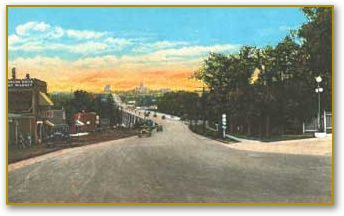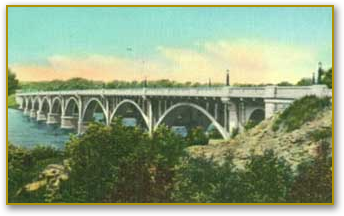The major problem was how to transport the workers to their job site.
At first ferry boats were used for this purpose but as the working population increased and the demand for more people to visit Columbia rose, this soon became impractical. The Guignard family built the first bridge across the Congaree River. Made of wood, it provided not only access to the mill but also eased transportation of the people and freight. With the charter as a town, there also came a certain desire to be independent and self-sustaining. Therefore came the birth of a business district – dry goods, livery stable, grocery store, post office, vegetable markets, mercantile stores. The trade center developed on what is now Meeting Street close to the river and a small portion on what is now State Street.
March 3, 1905, a fire destroyed the Brookland community. The fire engulfed and destroyed over seventy homes and buildings leaving death, injury, and poverty. The only home that was saved was the Finnegan house at 412 Spring Street. The next ten years were spent rebuilding the homes and the building still seen on Meeting and State Streets.
The river flooded every spring until the Dreher Shoals (Lake Murray) Dam was built.
The heaviest flood on record occurred on August 27, 1908, when the water reached 20 feet over the bank. In 1977, Mrs. Blanche Clarke Hare, who was then age 90, remembered seeing a chicken house go down the river with a chicken on top. The water covered the wooden bridge which was replaced by the Gervais Street Bridge in 1927.
The first Mayor of Brookland was John Witt. Mr. Lemuel Hall was elected as mayor in 1921 along with Mr. Johnny Hilton as town treasurer. Mr. Hall ran the town on only a 10 mil tax levy. The salaries were small. Councilmen received a respectable $25 per year, the new water supervisor $60, and the mayor and treasurer $125 each. Lemuel Hall can long be remembered for his uncanny tactics in catching bootleggers transporting illegal whiskey across the river to Columbia. With only one town policeman and himself, he would block the Guignard Bridge and pin the culprit. Revenues from these arrests would range from $100 to a hefty $200 per offender. Mr. Hall is also credited with bringing the first water system to Brookland.
As Columbia progressed, Brookland, or as it was finally named, West Columbia, felt the need to expand as well. In the present day, the City provides a full range of municipal services including police and fire protection, street and sanitation services, recreational activities, planning and zoning, and water and sewer services. In all respects, West Columbia is a city with a history and a future.



